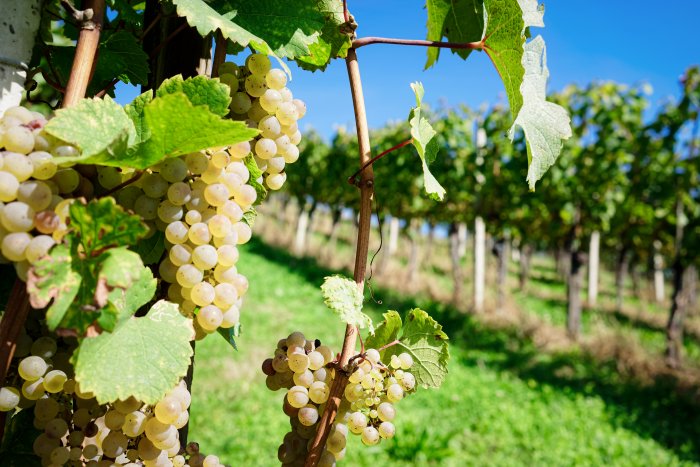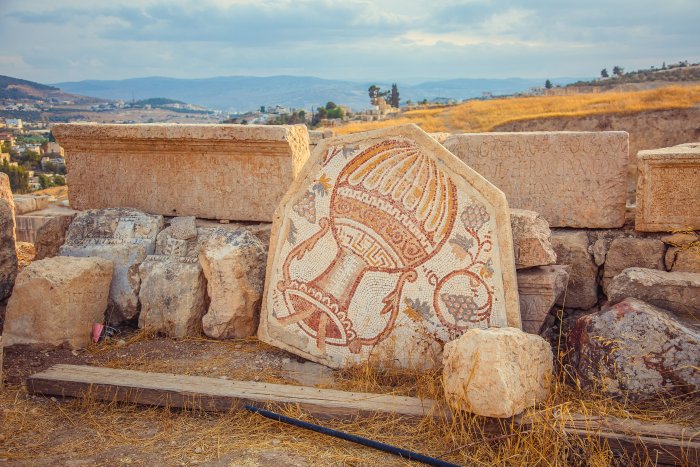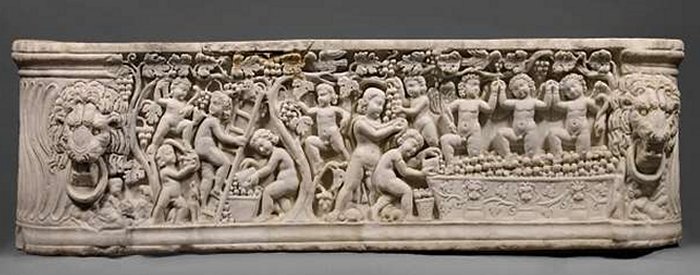AncientPages.com – It is no secret that the Romans were heavy wine drinkers. Estimates put the average Roman male’s consumption at a liter or more of diluted wine per day. The drink was also a symbol of civilized behavior, and widely used as a drug, medicine and ritual beverage. Winemaking was therefore a widespread and very profitable activity, and vine growing dominated much of the agricultural landscape.

Wine yard. Credit: Adobe Stock – Roman Babakin
Though the Romans consumed even more wine than we do today, ancient vineyards in Italy looked radically different from the typical landscape of rolling hillsides covered by rows of тιԍнтly spaced vines.
We can learn a great deal from the methods Romans used to produce wine about adapting our own agricultural systems to a warming planet.
My research has explored the role of vine agroforestry systems in Roman viticulture by looking at archaeology, ancient literature and more modern sources.
Forest agriculture
A very common technique for growing grape vines in Roman times was to attach them to rows of trees in fields that were also used for cereals and vegetables, in a system called arbustum.
In contrast to the low plants that blanket hillsides in modern vineyards, these vines grew high into the trees. Numerous scenes on Roman sarcophagi and mosaics depict harvesters picking grapes using high ladders, and collecting them in small, distinctive cone-shaped baskets.
Pre industrial wine production
The popularity of Arbustum was mainly due to peasants’ need for subsistence. They would combine several crops on one small area of land in order to survive, though more commercial farms have also been recorded. The practice was so common that even great thinkers weighed in on the matter. Both Pliny and Columella recommended the use of fast growing trees with lots of foliage to protect vines from snooping animals.
Location also played a big role. Almost all ancient texts place the use of vine agroforestry in the low lying, flat, and damp lands of the Italian peninsula. This observation may baffle modern wine growers, as grapevines do not like too much water. However, these lands were often close to rivers and coasts, which were major economic corridors and therefore attractive areas for settlement and agriculture.
Such flat, expansive lands were also ideal for applying centuriation, the Roman method of subdividing farmland into grids. The system was perfect for inserting and expanding lines of vine covered trees.
To modern wine makers, growing vines in damp soil and humid air is unthinkable. It presents a huge risk of fungal diseases that could weaken and kill the vine. Nevertheless, the Romans made it work.
An enduring, ancient technique
Luckily for researchers, versions of arbustum remained in use in Italy until the early 20th century. This relatively recent documentation, in combination with ancient source material, reveals the ingenuity of the system.

Credit: Adobe Stock – popovatetiana
The main tree species used were poplars, elms, elders, willows, maples, and ashes, which grow well in moist areas because they need lots of water to sustain their rapid growth and high transpiration rates. This means that they soak up excess water from the soil, acting as a water pump and contributing to the natural drainage of an area. Their roots meant vines could stay healthy and perform well in humid environments for centuries on end.
But the sophistication of the system goes much further. By training vines to climb high—up to 15 or even 20 meters—the damage done by rising soil dampness was further reduced, while the heating impact of the sun was increased. This made grapes develop and mature better, as long as the right balance between shade (from foliage) and sun exposure was obtained. High climbing vines also have deeper and more developed roots, which makes them more resistant to rot caused by parasites.
Examples in pre industrial Portugal also show that the trees themselves even contribute to the microclimate of the vineyard: they mitigate the impact of winter frosts, offer protection against strong and damaging winds, and reduce the distribution of unwanted seeds.
An example for a warming world
Records show that vine agroforestery expanded mᴀssively between the years 200 BC and 200 AD, during what is known as the Roman Climate Optimum, a period of several centuries of markedly warmer temperatures that coincided with the expansion of the Roman Empire. This means that Roman winemakers in Italy often operated under warmer and more humid conditions than those experienced in much of the 20th century.

Sarcophagus representing a Dionysiac Vintage Festival, A.D. 290–300. On the left, erotes are picking grapes with the aid of ladders from vines on trees. Getty Museum Collection
The resilience of vine agroforestry under rising temperatures—which bring with them new pests and diseases—becomes most evident when looking at pioneering modern initiatives in the south of France. Experiments at the farm of Restinclières have confirmed the microclimatic benefits of vine agroforestry, including protection against frosts and the presence of beneficial insects.
Most importantly, however, the shade provided by trees seems to delay the ripening of grapes by weeks without problematically decreasing yields. This is a blessing for winemakers who are increasingly faced with grapes that mature too quickly, have too many sugars, and give lower quality wines with too much alcohol as a result of higher annual temperatures.
Roman agriculture on the world stage
The Food and Agriculture Organization of the United Nations has recently stressed the benefits of agroforestry in a warming world. It has emphasized in particular the need for scaling up agroforestry and its numerous environmental and socioeconomic benefits, especially in helping millions of smallholder farmers survive in an increasingly hostile climate.
Insights into Roman and pre-industrial practices suggest that this approach may also help winemakers to adapt to an ever-warming planet. It also begs the much wider question of what else we can learn by looking to the past as we confront an uncertain future.
Written by Dimitri Van Limbergen, Postdoctoral Researcher, Ghent University
Provided by The Conversation
This article is republished from The Conversation under a Creative Commons license. Read the original article.





